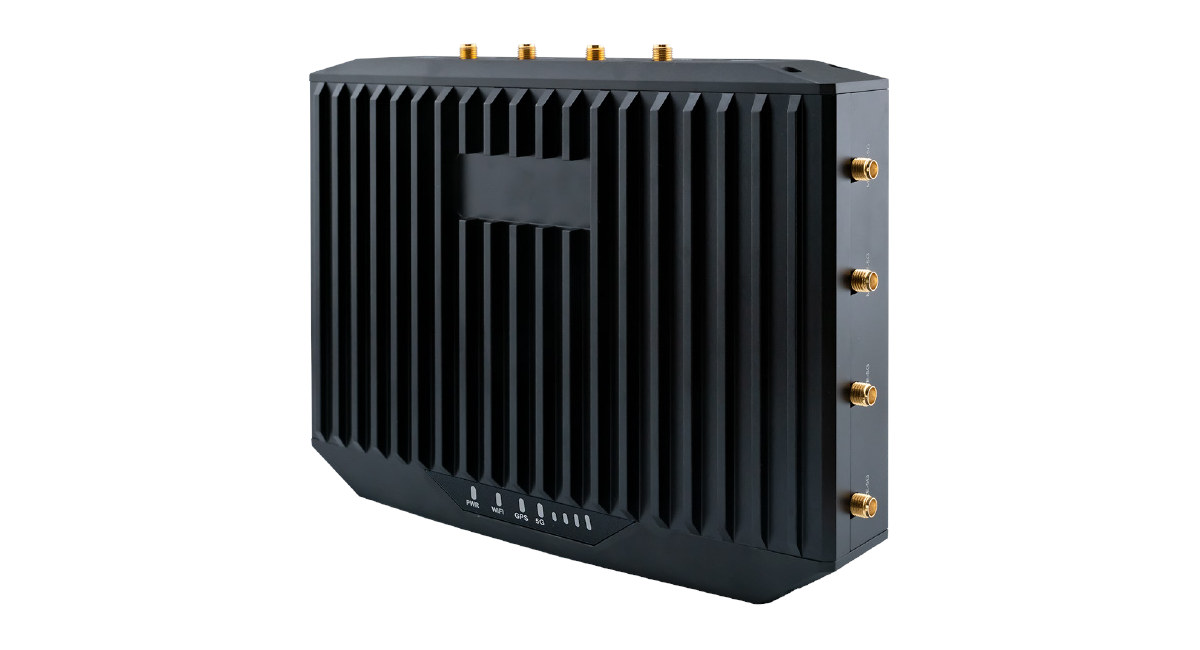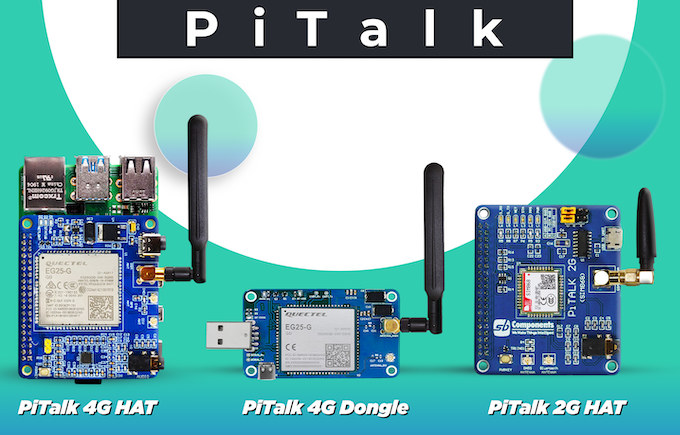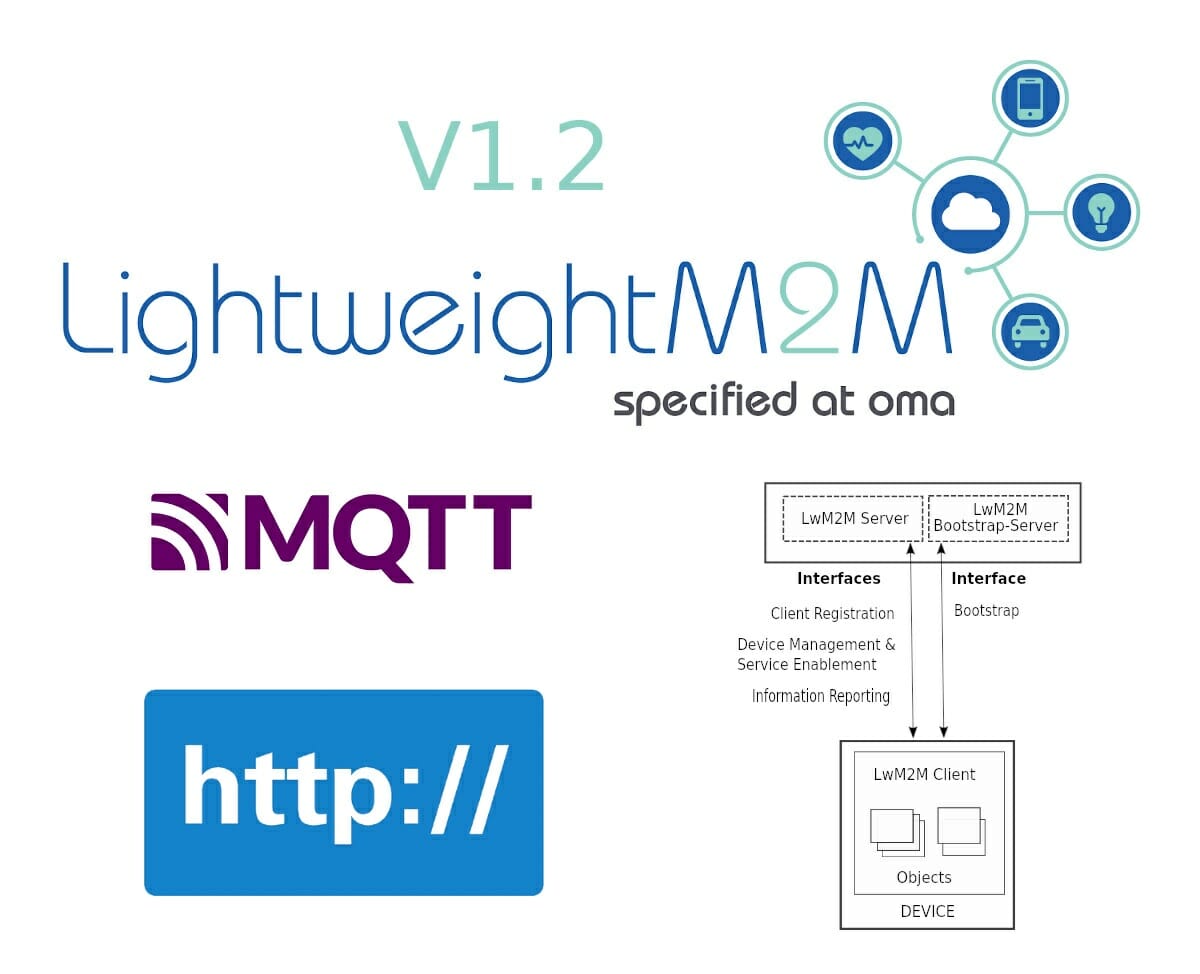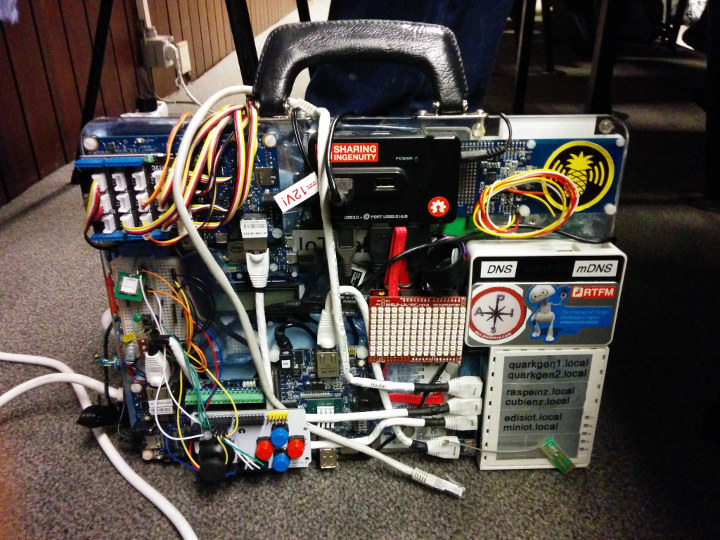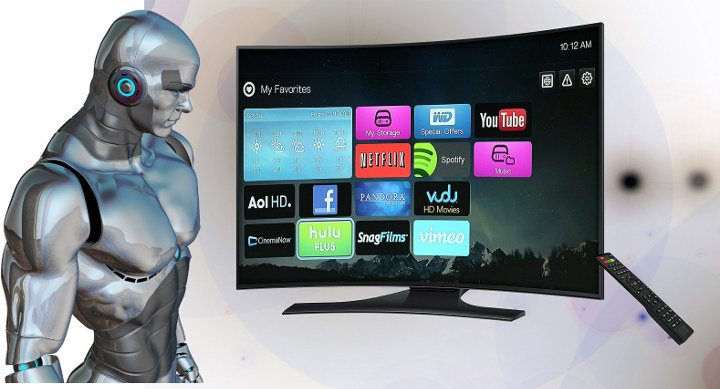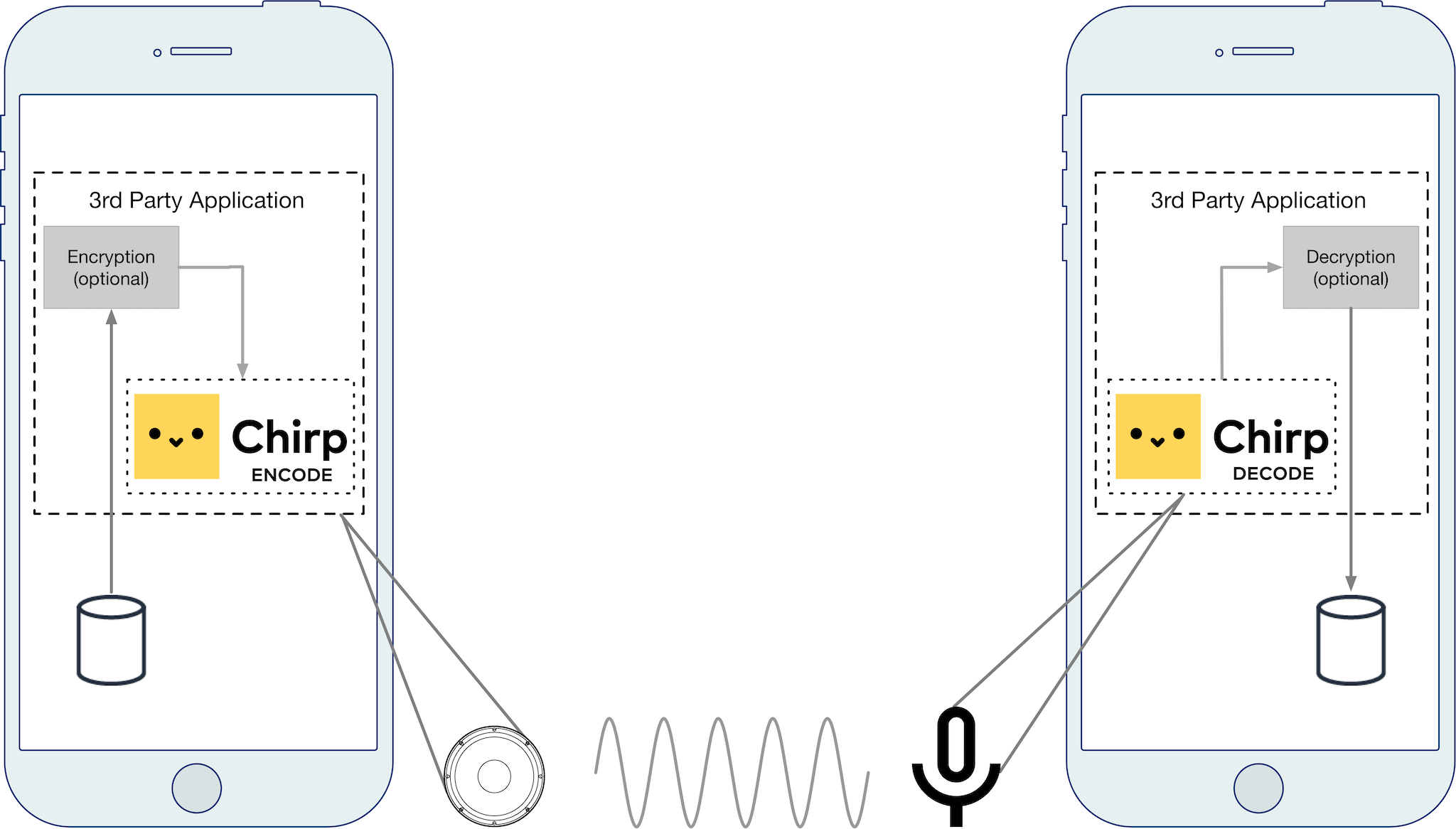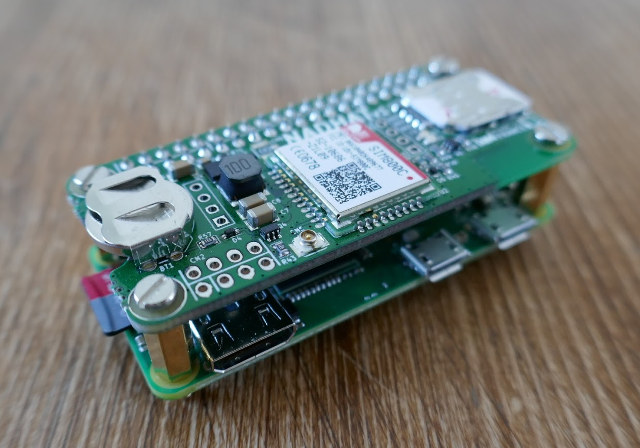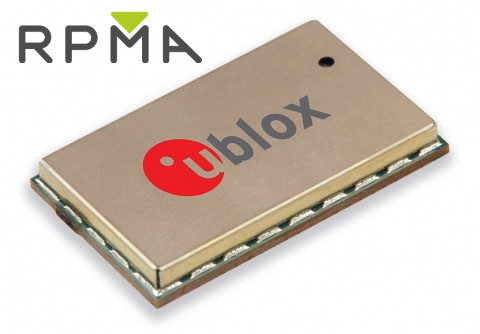Queclink Wireless Solutions WR300FG is a dual SIM 5G industrial router with five Gigabit Ethernet ports, WiFi 6, GNSS, RS232 and RS485 interfaces designed for factory automation, smart energy infrastructure, and Internet of Vehicles (IoV). TheWR300FG is based on a Qualcomm IPQ8072 quad-core Arm Cortex-A53 networking processor running OpenWrt, supports both 5G SA/NSA modes, backward-compatibility with 4G/3G, and its dual SIM features enabled automatic switchover for interrupted 5G connectivity. WR300FG specifications: SoC – Qualcomm IPQ8072 quad-core Arm Cortex-A53 @ 2.2 GHz part of Qualcomm Networking Pro 1200 Platform System Memory – TBD Storage – 1GB flash (described as “hard disk” in the press release!) Connectivity Cellular 5G SA, 5G NSA, 4G LTE, 3G UMTS Operating bands 5G NR – n1/n2/n3/n5/n7/n8/n12/n20/n28/n38/n40/n41/n48/n66/n71/n77/n78/n79LTE-FDD: B1/B3/B5/B7/B8/B18/B19/B20/B26/B28/B32 LTE-TDD: B34/B38/39/B40/B41/B42/B43 WCDMA: B1/B2/B4/B5/B6/B8/B19 2G GSM: 850/900/1800/1900 MHz Data rates 5G SA: DL 2.1Gbps; UL 900Mbps 5G NSA: DL 2.5Gbps; UL 650Mbps LTE-FDD: Max 150Mbps (DL)/Max 50Mbps (UL) […]
PiTalk 4G HAT for Raspberry Pi / 4G USB dongle targets M2M and IoT applications (Crowdfunding)
PiTalk is a 4G cellular connectivity solution based on Quectel EG25-G LTE Cat 4 module intended for M2M and IoT applications, and available either as a Raspberry Pi HAT or as a USB dongle. There’s also a PiTalk 2G HAT, but we’ll focus on the 4G hardware in this article. PiTalk supports data rates up to 150 Mbps downlink and 50 Mbps uplink, integrates GNSS support, and as its name implies you can also make and receive calls, or send/receive SMS messages for the device provide you connect a display, speaker, and microphone to the Raspberry Pi or other host device. PiTalk 4G IoT HAT specifications: Quectel EG25-G 4G LTE cellular module: Cellular 3G and 4G LTE with 2G fallback Max. 150Mbps DL/ 50Mbps UL Global bands support 4G LTE-FDD: B1/B2/B3/B4/B5/B7/B8/B12/B13/B18/B19/B20/B25/B26/B28 4G LTE-TDD: B38/B39/B40/B41 3G WCDMA: B1/B2/B4/B5/B6/B8/B19 2G GSM: B2/B3/B5/B8 GNSS – Qualcomm IZat location technology Gen8C Lite (GPS, GLONASS, […]
LwM2M v1.2 M2M & IoT device management protocol adds support for HTTP and MQTT, LwM2M gateways
Lightweight M2M (LwM2M) is a REST-based protocol from the Open Mobile Alliance (OMA) for M2M & IoT device management that defines the application layer communication protocol between an LwM2M server and an LwM2M client running on an IoT/embedded device. While LwM2M v1.0 was published in early 2017, we first covered the new protocol a year earlier as Imagination Technologies released the source code for the LwM2M stack running on MIPS Creator Ci40 development board. Since then we’ve mostly seen the LwM2M protocol supported in cellular LTE IoT modules including Quectel BC66 and u-Blox Sara-R410M, as well as the now-defunct Samsung Artik WiFi IoT modules. LwM2M v1.0 was followed by v1.0.1 and v1.0.2 for bug fixes, and v1.1, but OMA has now announced LwM2M v1.2 protocol that adds the following new features: New transports for LwM2M: MQTT and HTTP Optimizations for the bootstrapping and registration interfaces to reduce the amount of […]
FOSDEM 2020 IoT Devroom Call for Proposals
FOSDEM (Free & Open-source Software Developers’ European Meeting) takes place every year in Brussels, Belgium on the first weekend of February. FOSDEM 2020 is scheduled for February 1-2, and now that developer rooms have already been announced, there are calls for proposals for each topic. Benjamin Henrion (aka Zoobab), a frequent reader and commenter of CNX Software, will be in charge of the IoT devroom and has now initiated a call for proposals for Internet of Things talks. The devroom will take place on Saturday or Sunday between around 10.30 and 18:00. Each talk will last 25 minutes with a 5-minute break between talks. The talks must be about fully open source projects that cover one of the topics below: Machine-to-machine (M2M) communication on small embedded devices Distributed applications in any field of interest for autonomous/self-controlled devices, (e.g. domotics, automotive, etc) Networking: TCP/IP, mesh networking, message queuing, cross-layer solutions Real-life […]
MPEG Video Coding for Machines (VCM) is in the Works
A video codec for machines seems like a good topic for the first of April, or an article on the Onion. But based on a recent press release by Gyrfalcon Technology, this may become a real thing as the company partnered with China Telecom, and proposed a new video codec called “Video Coding for machines” (VCM) that provides compression coding for machine vision and human-machine hybrid vision. Apparently a recent study published by Cisco in 2018, humans will become bit players in the “video watching business”, and Machine-to-Machine (M2M) applications will represent the greatest usage of Internet video traffic over the next four years. So the goal of the VCM group will be to establish a new standard that will improve the previous generation video coding and decoding standards such as H.264 (AVC), H.265 (HEVC) and H.266 (VVC). Few details are provided so far, and I can’t find any VCM […]
Arduino Partners with Chirp to Enable Data-Over-Sound M2M Connectivity
Announced on August 12, 2019, Arduino has partnered with the London-based Chirp, a wireless data-over-sound software solution for machine-to-machine connectivity. The system has the ability to work online or offline, as long as there is a loudspeaker and a microphone available. The software works with the Arduino Nano 33 BLE Sense board in send and receive mode, while most Arduino MKR boards and Arduino Nano 33 IoT will also be supported by the SDK, but only to send data. The software and board are fully compatible with SDKs from a wide variety of platforms. The Nano 33 BLE Sense is available for purchase from the Arduino website, for $29.50. The sensor-rich Arduino Nano 33 BLE Sense is application-ready right out of the box, and Chirp is ready to start sending encoded data from a device fitted with an audio speaker, to the board’s built-in microphone, where it is encoded and […]
Nadhat is an Add-on Board for Raspberry Pi Boards with 2G GSM/GPRS Support
Making Raspberry Pi HATs for fun seems to have become a popular hobby, as after checking out Leon Anavi’s Infrared pHAT a little while ago, I’ve just come across Nadhat add-on board with GSM/GPRS and Bluetooth 3.0 made by Frederic Pierson in his spare time. Nad stands for “Network Access Device”, and the device comes with the following specifications: SIM800C module with 2G GSM/GPRS support, and Bluetooth 3.0 + EDR (but Bluetooth is not mentioned by the developer, so it may not work right now) SIM card slot + connector for GSM antenna CR1225 cell battery slot for RTC 40-pin header provided, but not soldered Dimensions – 65 x30 mm, compatible with Raspberry Pi Zero He explains that he made the board himself and the PCBs “are leaded reflow processed and do not follow regulations in Europe”. You’ll also have to provide your own GSM antenna and CR1225 battery. He’s […]
u-blox SARA-S200 RPMA Module Supports the Machine Network
RPMA is one of the many LPWAN IoT communication standards, but it does not get as much press coverage as SigFox or LoRa because it targets larger scale deployments, and is not really accessible to individuals. It’s still used by companies in many countries, and u-blox has just released SARA-S200 RPMA module that will also work with the Machine Network, also relying on RPMA and managed by Ingenu. u-blox SARA-S200 module specifications: Connectivity Wireless Frequency – 2.4 GHz ISM Radio Spectrum – 80 MHz Occupied Bandwidth – 1 MHz Modulation – Dynamic – Direct Sequence Spread Spectrum (D-DSSS) Multiple Access Scheme – Random Phase Multiple Access (RPMA) Transmit Power – +22 dBm Receive Sensitivity – -133 dBm Data Throughput – 100 kB per day Link budget – 176 dB (FCC/IC) Host Interface – 7-wire SPI that includes handshaking for deep sleep modes Power Supply – 3.2 V to 3.4 V […]


